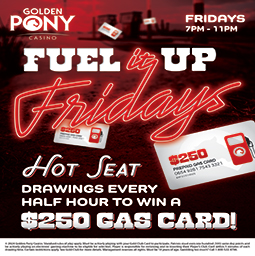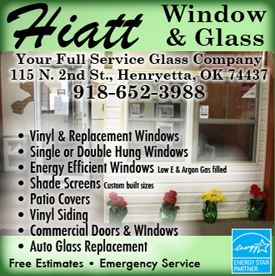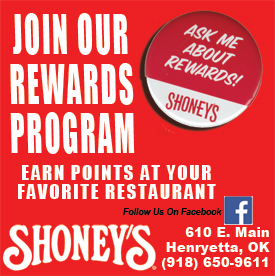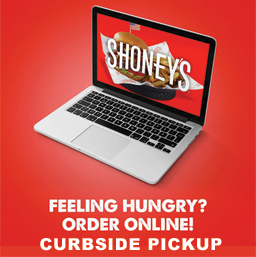By Earl Goldsmith
Drug stores were popular meeting or gathering places for Henryetta teens in the 30s and 40s, and were also good places of employment for them as soda jerks, since nearly all had soda fountains with stools where adult customers usually sat.
Most had booths or tables where kids could sit, talk, laugh, or be foolish as they drank cokes, malts or sodas, or ate ice cream dishes. 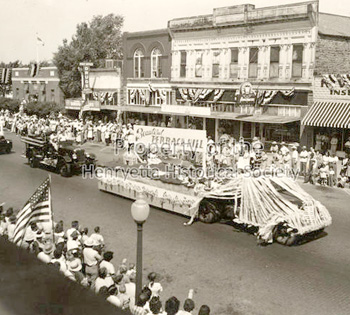 Post Office Drug was just east of the old post office (now the library). It was owned by Earl Russell, a strong civic supporter and very active Lions Club member he was a District Lion's Governor. His daughter, Earlene, was a cheerleader and very well-liked member of my 1948 HHS class.
Post Office Drug was just east of the old post office (now the library). It was owned by Earl Russell, a strong civic supporter and very active Lions Club member he was a District Lion's Governor. His daughter, Earlene, was a cheerleader and very well-liked member of my 1948 HHS class.
The store had a soda fountain with tables and was rather popular with the kids.
It also had a small magazine rack near the front and kids used to stand there and scan comic books.
I once saw a nudist magazine in the rack, but didn't get to scan it because two women who knew me were standing nearby a common thing that helped keep small-town kids on good behavior.
Judy's Drug, at the northwest corner of Fifth and Main, and was the most popular meeting place for young people of my Junior and Senior high school years.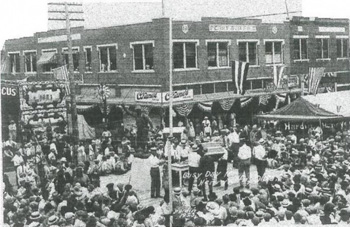
It was "Santee's" in the 20s and the 1923 HHS pre-graduation dinner was held there my youngest aunt was in that class. Mr. and Mrs. Judy owned it in the 30s and early 40s, and sold it to Mr. and Mrs. Jones in about 1943, but the Jones kept the "Judy" name. It had a soda fountain and several booths, and it's feature soda fountain item was a soft chocolate ice cream cone called a frozen malt.
The only places I've encountered frozen malts that rivaled Judy's in all the years since then were at a Columbus, Georgia drive-in restaurant in the 1950s and at a baseball stadium in Wichita, Kansas in the 1970s. In the 30s, Judy's had air conditioning, a rarity for the times, and was often so crowed at night that they locked the doors and let people in only as others left.
In the 40s, paper boys waiting to pick up evening papers at the Free-Lance office on north Fifth often went to Judy's and joined in pairs to buy a pint of frozen malt the soda jerk would split with a cleaver. Eating a half-pint of frozen malt while delivering your papers was big-time living. High school boys gathered in Judy's on Monday nights to wait for the girls to show up after the Rainbow Girls meeting at the Masonic Lodge on south Fifth. Then they bought cokes and walked them home.
After the Joneses bought the store, Mrs. Jones managed the front and Mr. Jones was the pharmacist. Mrs. Jones tried to instill discipline in the teenage customers, but that wasn't easy. She yelled at boys to stop scanning comic books instead of buying them, but that merely caused them to scan more just to upset her. If you broke a coke glass, she immediately yelled that it'd cost you a nickel large glasses were a dime.
Pepper Payne, Don Silvey and I sometimes odd-manned to see who'd pay for a glass we'd shove off the table onto the tile floor just to get her started.
She didn't like it if kids lingered in booths because she wanted booths available for others who'd be buying something. That was another challenge. Pepper and I took a chess set to Judy's, plopped in a booth, ordered nickel cokes and started playing, just to see how long it would take her to come yelling about 30 seconds. I don't know how many things I did to upset Mrs. Jones, but I did a poor job of getting her to hate me.
When I graduated from high school, she gave me a nice pen and pencil set. I guess when you sum it up, she was a better lady than I was a teenager. The Jones, son, Donald Wayne was a few years younger than me. He played a saxophone in the band.I think the first year Tony Anderson was band director and had the most expensive saxophone anyone in Henryetta'd seen to that time.  Green's Drug was between Fourth and Fifth in the street floor of the Morgan Building. It had a soda fountain, too, but wasn't as popular in my days as Judy's or the Post Office Drug. It might have been more popular in the late 30s, though, when the owner's son, Larry Green, was an HHS debater.
Green's Drug was between Fourth and Fifth in the street floor of the Morgan Building. It had a soda fountain, too, but wasn't as popular in my days as Judy's or the Post Office Drug. It might have been more popular in the late 30s, though, when the owner's son, Larry Green, was an HHS debater.
He, with James Brown, won the state debate championship in about 1938, something that was later done twice when Buddy Ginsberg of my class and Sue Kaufman of the class behind me won it in 1947 and 1948.
In the late 30s, Caswell Flake, brother of my classmate, Robert Flake, worked at Green's. Robert worked there later. Sadly, Caswell was killed in WWII. Mr. Green had such a high respect for both Caswell and Robert that he entrusted them with the keys and combination to the safe that held the store cash, and more importantly, all the narcotics and narcotic records that were audited each month by a state inspector. There were some little known things about Green's Drug Store.
Interestingly, Green's sold a line of animal gut strings for violins and guitars and an extensive line of veterinary supplies. Additionally, Mr. Green mixed his own cough syrup. I think that either Mrs. Judy or Mrs. Jones at Judy's was a sister of Mrs. Green. Green's later became Hefner's.
Owl Drug was on the southeast corner of Fourth and Main. In the late 30s, it had a tiny delivery car called the "Doodle Bug". I don't know who owned the store in the 30s, but it was purchased by Clarence and Maud Amy Griffith in about 1940. Maud Amy and my mother were close friends from their school teacher days – they had attended Ada's East Central State Teacher College together in the years before 1920.
Before marrying Clarence, Maud Amy taught a year in Bristow in the 20s, and then at HHS for several years as Maud Amy Stewart. The Owl became a Rexall after the Griffiths bought it. They removed the soda fountain seats and the tables, and as a result, kids didn't spend much time there. The Griffiths had no children, but Maud Amy quietly did things to befriend financially disadvantaged girls at HHS while I was there.
Berry Drug was a late arrival (mid 40s) for my time. It was just east of the Morgan Theater and was owned by Ted Berry, who also owned the Arcade Cigar Store on the other side of the Morgan. It had a soda fountain and was the only Henryetta drug store where I recall a coin operated (pinball) game machine.
Mr. Berry was President of the School Board. I knew and liked him and think all the kids did they'd known him from the Arcade where they used to buy all-day suckers, (yes, they had suckers then that were so big and so hard to lick away that that called them "all day" suckers) other candy, or magazines. At one time, younger boys thought a way to get into the Morgan free was to find a ticket stub, go into the Arcade, buy an all-day sucker, and then walk into the Morgan holding up the stub and telling the doorman you'd just run over to the Arcade to buy a sucker. I never tried it because I didn't think the Morgan people were that dumb. When I later worked at the Morgan and Blaine as an usher, I learned some kids still tried it, but it didn't work.
At one time, younger boys thought a way to get into the Morgan free was to find a ticket stub, go into the Arcade, buy an all-day sucker, and then walk into the Morgan holding up the stub and telling the doorman you'd just run over to the Arcade to buy a sucker. I never tried it because I didn't think the Morgan people were that dumb. When I later worked at the Morgan and Blaine as an usher, I learned some kids still tried it, but it didn't work.
Mr. Berry had two children, a daughter, Gloria, who was in my older sister's class, and a son, Ted, a few years younger than me. After I left Henryetta, Gloria worked at the Free-Lance, then married a young man named Langdon who worked there. They bought a newspaper in Tonkawa and ran it for many years until the two of them died within a day of each other in the early 2000's Young Ted Berry, who is also no longer living, was a good friend of Eddie Anglin, son of our great 1940s coach Marion Anglin, and was almost always with Eddie at the daily Hen practices. Eddie Anglin is now nearly 80, lives a little north of Dallas, and is an still a decent golfer.
One last memory of Henryetta's drug stores. During the late 30s, they all had curb service where cars could park and carhops would bring things out from the soda fountains. (I don't know if they were called carhops then or if that nickname came later.) Judy's and the Owl had spaces in front and on the side, but Post Office and Green's just had two or three spaces each. Curb customers were expected to leave after the carhop (?) brought their items so others could have their spaces.









